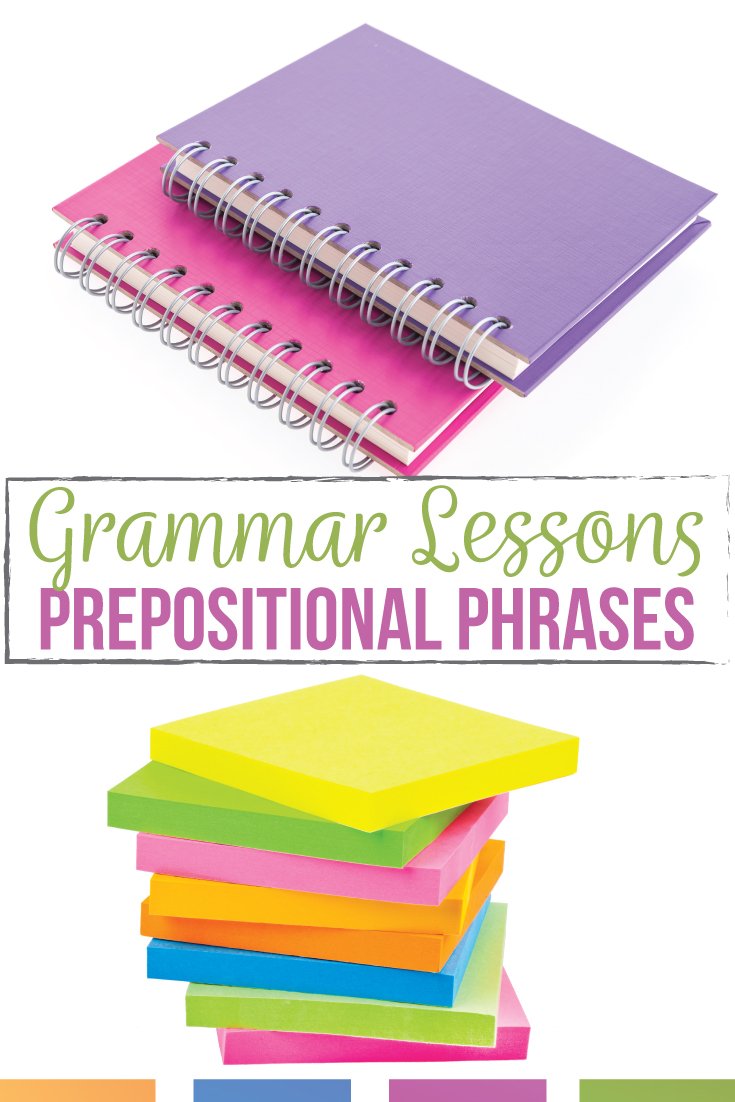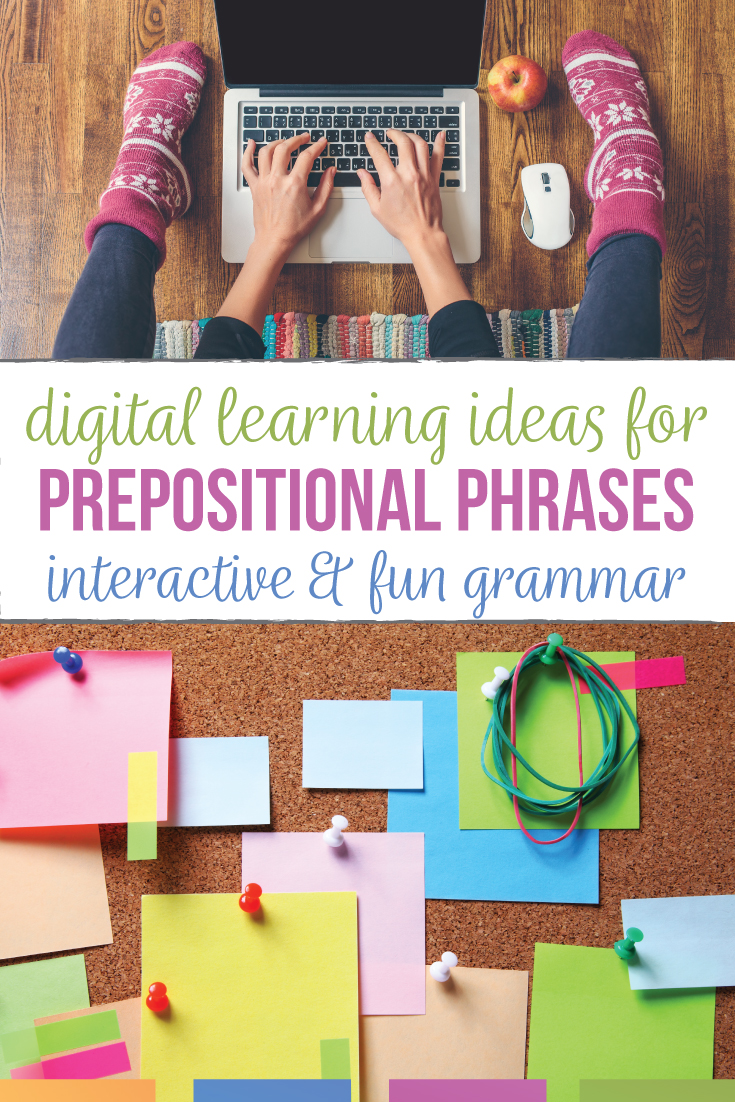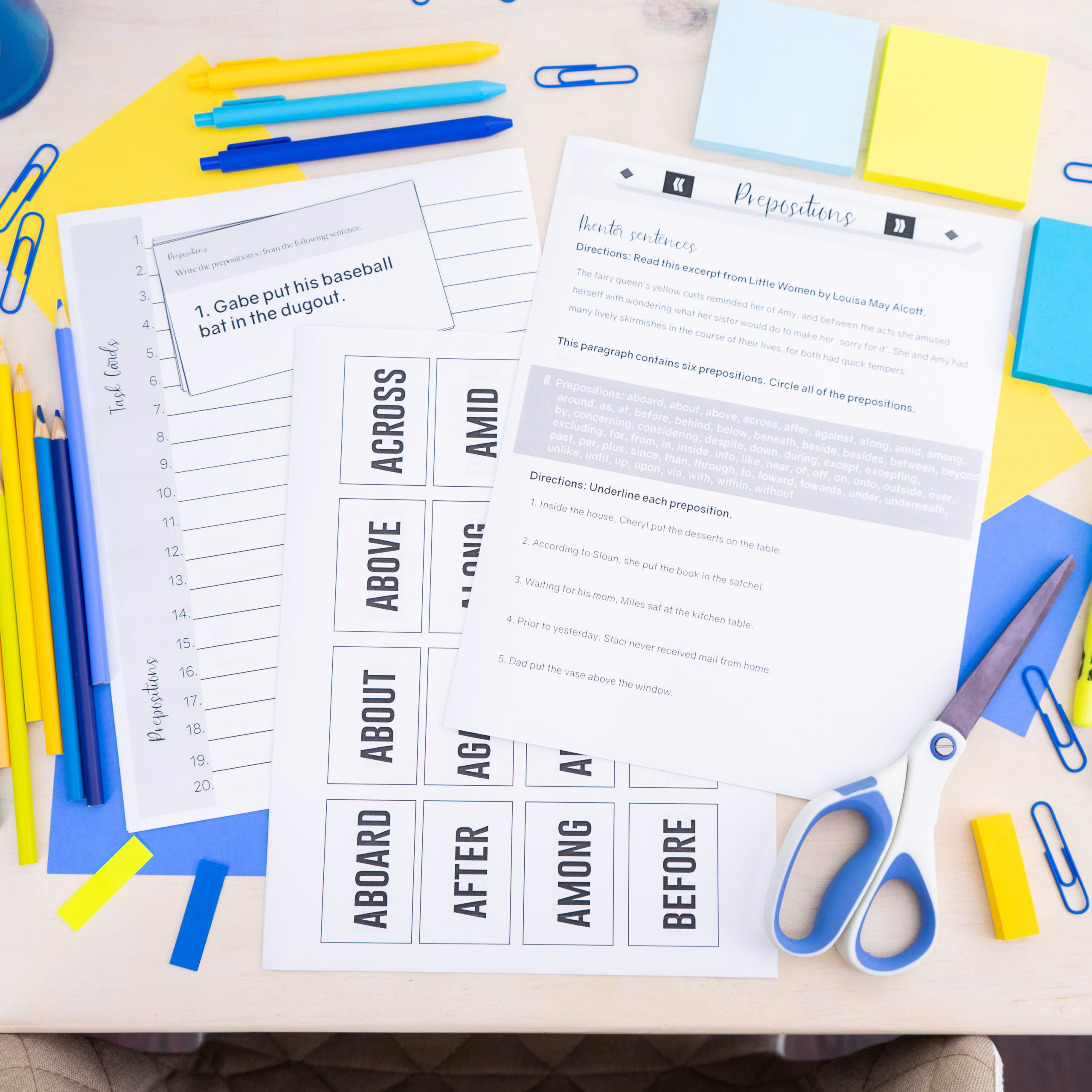Preposition lesson plans can be engaging and meaningful to students, and they can include engaging preposition activities—more than preposition worksheets.
I enjoy teaching prepositions. When I cover prepositions, I provide a variety of learning opportunities for classes so they can use prepositions and their punctuation correctly. Prepositions are normally part of middle school grammar, but I need to review prepositions with older students, especially when we cover commas. Teaching prepositional phrases is normally a part of punctuation lessons, so I pull out a preposition activity or two (mentioned below!) with older students.
So, if you’re looking for ideas for how to teach prepositions, welcome!
What age groups are best suited for preposition lesson plans and what topics should be covered?
Preposition lesson plans are best suited for elementary and middle school students. Topics that should be covered include preposition definition, examples, common prepositions, preposition usage in sentences, and preposition practice exercises. Beginners might need more memorization than experienced learners need.
In this post, I hope to provide preposition activities that will work with an advanced small group, middle school classes, and high school classes.
What are the most important concepts to cover in a preposition lesson plan?
The most important concepts to cover in a preposition lesson plan include introducing most common prepositions and their function, providing examples of common prepositions, explaining how prepositions show relationships between objects, and practicing identifying and using prepositions in sentences.

How can I plan out my preposition activities?
First, preposition worksheets can help students understand this part of speech, but I find prepositions lend themselves to interactive activities, especially with pictures for teaching prepositions.
Second, with any preposition lesson, I start with a definition: prepositions link words and show relationships between words. They are followed by a noun or pronoun to create prepositional phrases. Because I work with older students, I find it easiest to teach prepositional phrases as we cover prepositions. Rarely have my students not learned about prepositions before they are in my class. No matter what prepositions lesson plan I make, I am sure to build on prior knowledge.
Third, in this outline of how to teach prepositions, I talk about prepositions and prepositional phrases interchangeably. If you have younger students or students who have not learned prepositions, you might need to adjust my plans. Overall, my lesson on prepositions includes a prepositional phrases lesson. You might need to adapt a preposition activity or two and your approach with teaching prepositions won’t included phrases.
Finally, I’ve worked with students with varying degrees of grammatical understanding. My preposition activities reflect that experience. Some of these concepts will work perfectly for your learners. Others, you might use another year. I’m presenting all sorts of ways for teaching prepositions below.
Activate prior knowledge with grammar.
Before a lesson on prepositions, activate prior knowledge with a quick preposition activity. Grab a box to create a visual for students with teaching prepositions: we cover a box with prepositions to practice locations. (You can download the PDF in my membership library.) The first day, define prepositions and show students the list of prepositions in the presentation. Then, as an interactive preposition activity, we adhere the pieces to the box.
The box (or another object) as well as the pieces are prepped before class. Cut apart prepositions and grab some tape. If you prefer not to print out the prepositions, write one preposition on one sticky note. Students can then grab a sticky note or two to adhere to the preposition box.
After classes realize they are already familiar with prepositions, ask them to stick/tape the preposition pieces onto the object. Many pieces will make sense in different locations (“under” underneath the box), but not all of the pieces will work that way. I stick those on the board and ask students to write prepositional phrases with them. (of cake, from our house.)
We close the first day by discussing all of the prepositions of place, prepositions of time, prepositions of movement—the overall concept of prepositions.
The preposition boxes often become part of our classroom decor. Students add funny prepositional phrases throughout the school year, and we have a fun piece of classroom decor that builds relationships.
Review quickly, maybe with a worksheet.
Prepositions are in younger grade standards, and many middle school and high school students only need a quick review with them. When older students work on punctuation and parallelism, they might need a brief review of prepositions. So! With my ideas for preposition lesson plans, I am considering that we’ll cover these ideas with different grade levels.
And? Older kids might not enjoy a preposition box or coloring sheets—which is perfectly fine. In such a situation, I review with preposition worksheets. The worksheets might be a ten minute detour from our more difficult grammar lesson. I know that many people grumble about grammar worksheets, but I have found that a preposition worksheet can be a straightforward review for older students. My older students won’t necessarily appreciate a preposition box, but they will be happy with a no-nonsense worksheet.
Preposition worksheets can end confusion and emphasize important concepts. If your students only need a quick preposition review, use a quick worksheet.
Work together.
Prepositions lend themselves to group work. Aside from creating boxes, I ask everyone to find “preposition songs” on YouTube. The songs are SUPER goofy, and my older kiddos think they are funny. We play these songs during our preposition lessons or later as review. Eventually, I always end up with some students who sing the songs.
As we transition into literature, I ask students to find prepositions from their reading (you could do prepositional phrases for advanced classes). If students need extra practice, we will complete a worksheet or task cards together.
Since I teach grammar alongside literature, I connect preposition lessons to whatever short story we are reading. Moreover, I also continually review parts of speech that we have previously covered. The continual practice and low-pressure review make students comfortable with grammar. Then as we continue with literature lessons, I will point out prepositional phrases in use. Doing so shows students that grammar is not a separate piece of an ELA class.
Finally, task cards make great group work for a quick preposition review. Post the task cards around the room, and have students rotate and identify prepositions. My preposition lesson plans typically contain group work or small teams.
Use pictures to create prepositional phrases.
Utilizing pictures for teaching prepositions is a great activity! Draw a picture, ask students to draw an image, or show students pictures. Partner students and ask them to give descriptions of the picture: around the barn, in the barn, next to the barn, and on. The presentation that I use has ten pictures, and I divide those pictures across many days of lessons. Pictures for teaching prepositions provide endless conversations and writing opportunities.
Using pictures with prepositional phrases really activates prior knowledge. Students do know prepositions, and they know how to give directions or describe locations of objects. I’ve even allowed students to give me directions using prepositional phrases and walked around according to their prompts. It gets silly!
Middle school grammar should engage students, and pictures create the best sentences. When my students and I write sentences from pictures and incorporate prepositional phrases, we naturally transition into writing or literature lessons. Look:
- You can naturally discuss introductory prepositional phrases in student writing and confirm they have commas.
- You can find prepositions and prepositional phrases in your literature studies. (Informational texts and speeches work too.)
- Ask evaluative questions: are too many prepositional phrases used? What is the effect?
Remember, the more you connect grammar to other portions of class, the more your classes will become comfortable with grammar lessons. Providing pictures for teaching prepositions is an easy way to connect grammar to writing.
Creating prepositional pictures would be a fun collaborative experience. You can assemble the pictures together and use them in future grammar lessons. Additionally, those finished preposition activities become wonderful review material. Never stop adding to your preposition lesson plans with creativity!

Discussing English language.
Part of teaching language with older students is addressing the nuances and changes in grammar. A quick preposition activity is to talk about prepositions in everyday language. For instance, an antiquated rule is that writers should never end a sentence in a preposition, but most modern rules dictate that writers should avoid an awkward construction. Young writers think the discussion concerning a change in rules is interesting, and they often take sides. Be sure to add these sorts of discussions to your preposition lesson plan. Students should understand that our language changes.
Another analytical piece is deciding how a word is used, as many words (such as “after” or “for”) can be a preposition, adverb, or conjunction. Classes must apply rules and analyze each instance to decide how a word is used. Having natural conversations about language is a great way to avoid preposition worksheets.
Adding pronouns, conjunctions, verbs. . .
Finally, present your preposition lesson plans as engaging, because I’m sure it is! Connect prepositions to the other parts of speech to build on prior knowledge and to connect pieces of language.
My preposition activities including task cars and a picture presentation to use throughout your preposition activities. No matter what preposition activities you choose, be sure to connect grammar to writing and to activate prior knowledge. Soon, you’ll be sharing with other teachers how to teach prepositions.
You might like to check out my other blog posts for parts of speech such as nouns, pronouns, conjunctions, adverbs, and adjectives.
Check out my free library! Not only will you get a free preposition activity, but you will also get a dozen grammar activities, for free:

Join the conversation! My Facebook group, Grammar Gurus, talks about preposition activities, teaching prepositions, and a prepositional phrases lesson plan.





